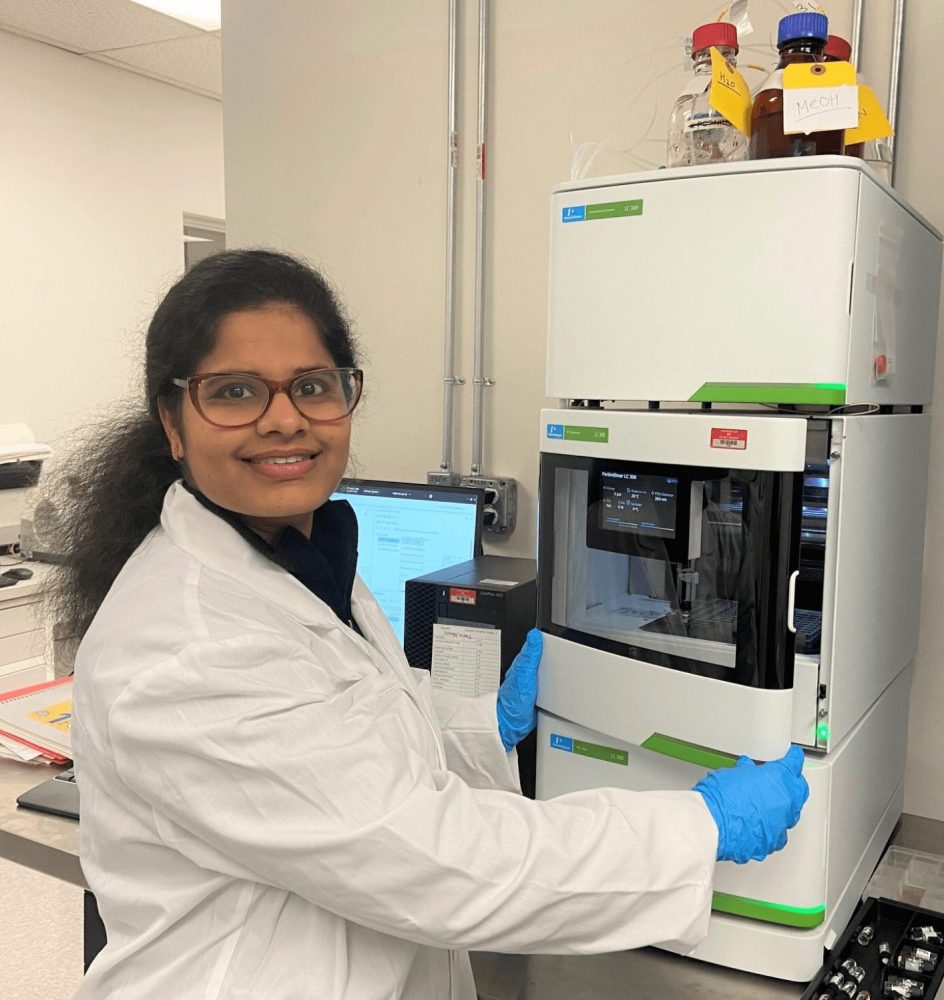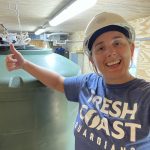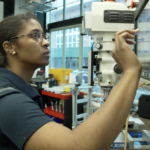
Editor’s Note: We’ve been profiling female scientists who applied for our first annual Women In Science Incentive Prize.
Even as a child, Priyanka Sharma, now a research assistant professor at State University of New York at Stony Brook, was curious about plants. “I wanted to know why the color of this rose is red,” she tells The Story Exchange, “I wanted to know the reason behind why they were the color they were, why they gave off different smells.”
Sharma turned that passion into a master’s degree, and then a PhD, where she fused her curiosity of plants with her desire to help her community. “I always saw problems in our society,” she says of her home state of Rajasthan, India. “Particularly related to water and pollution. When I joined my PhD I wanted to know why we weren’t already using leaves as filters for clean water.”
That was the point, the 35-year-old says, that took her “from there to here.” Here is now a tenure at Stony Brook’s Chemistry Department underneath Dr Benjamin Hsiao, who describes Sharma as “one of the top post-doctoral researchers I have ever mentored.”
Sharma was personally invited by Hsiao to join his department back in 2015, when he happened to visit her laboratory in Pune, India, where she was researching her thesis into celluloses and their nanoparticles. He was so impressed by her work he immediately asked her to come to New York.
Sharma has spent the past six years studying and developing a unique water filtration system using the cellulose of plant “biomass” – the natural, organic material that comes from plants. Not only can this matter be used to purify water for drinking, which Sharma hopes will benefit developing countries such as her own, but it can also be utilized to remediate degraded environmental landscapes.
Cellulose, which makes up the main part of a plant’s cell walls, is almost inexhaustible and a key source of sustainable materials. It can be used in clothing and other fabrics, or for building materials, or as an energy source – in the form of plant fibers and wood. It’s also one of the main components in agriculture waste, algae, weeds and grass.
Through the use of nanoscience, Sharma has extracted nanocelluloses from a broad range of plants and bacteria, and developed a method using nitro-oxidation to use these nanocelluloses in gravity-driven water filters. The technology can be as simple as dipping a teabag into a cup of water.
Not only can this biomass be used in water filtration, however, the material can provide economic opportunities too. Non-wood biomass which has a low or negative value — for example prosopis juliflora, an invasive weed in Africa, Asia and elsewhere — can be processed by Sharma’s nitro-oxidation method, which Hsiao highlights is a novel technique that uses very little energy consumption. The by-product from this extraction can be neutralized to produce nitrogen rich salts that can be used as plant fertilizer – thus enhancing the food, energy and water nexus, while the biomass can also be upcycled into construction and packaging for economic benefits.
“I just wanted to find out how we can efficiently utilize nature’s gift that is the plant. It has everything to sort out our societal problems,” Sharma says. “It’s the cheapest solution, it’s the easiest solution. And the most important thing is that it is the sustainable solution, too.”
Sharma is working with a New York-based company to scale up the product, and she is hoping to take this technology to the market by the end of next year.
Sharma hopes her material can be used in emergencies, and countries like India and Africa where water is a scarce resource. “It would be a really amazing thing if I could take this back to my home country,” she says.
But there’s also some place a little closer that she hopes her product will help.
When Sharma first came to America she lived in a house which had a “beautiful little pond” in the front. When she returned to visit in 2017 it was full of harmful algae.
“My first action is going to be to take this material to that pond, and get it looking beautiful again.”




